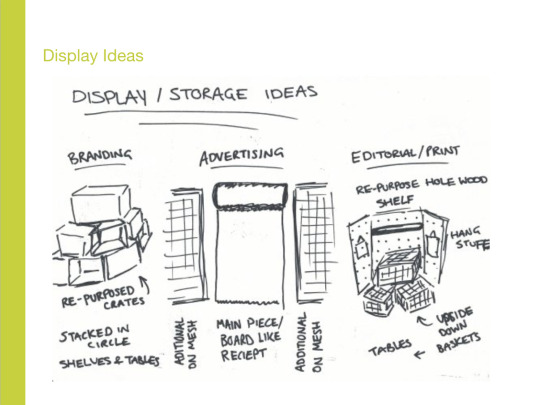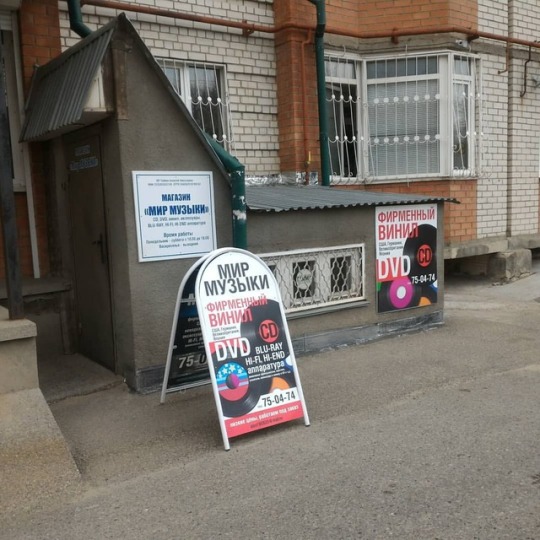#loc1
Text
How to get the url parameters using AngularJS
HTML source code
<div ng-app=""> <div ng-controller="test"> <div ng-address-bar browser="html5"></div> <br><br> $location.url() = {{$location.url()}}<br> $location.search() = {{$location.search('keyword')}}<br> $location.hash() = {{$location.hash()}}<br> keyword valus is={{loc}} and ={{loc1}} </div></div>
AngularJS source code
<script>function test($scope, $location) { $scope.$location = $location; $scope.ur = $scope.$location.url('www.html.com/x.html?keyword=test#/x/u'); $scope.loc1 = $scope.$location.search().keyword ; if($location.url().indexOf('keyword') > -1){ $scope.loc= $location.url().split('=')[1]; $scope.loc = $scope.loc.split("#")[0] } } </script>
Here the variables loc and loc1 both return test as the result for the above URL. Is this the correct way?
https://codehunter.cc/a/javascript/how-to-get-the-url-parameters-using-angularjs
0 notes
Text
GIÁ BÁN - CHÍNH SÁCH
Giá bán Lamia Bảo Lộc
Giá bán dự án Lamia Bảo Lộc dự án như
Nhà liền kề – Shophouse: từ 5,5 tỷ/căn (Chưa bao gồm VAT)
Liên kế vườn: từ 7,5 tỷ/căn (Chưa bao gồm VAT)
Biệt thự: 10 tỷ/căn (Chưa bao gồm VAT)
Chính sách và tiến độ thanh toán
Hiện tại chủ đầu tư nhận cọc trước 50tr.
Đăng Ký Tư Vấn
*Vui lòng điền đầy đủ thông tin dưới đây
Họ và Tên
Emai
Số Điện Thoại
THIẾT KẾ NHÀ PHỐ BIỆT THỰ TẠI LAMIA BẢO LỘC
Thiết kế nhà tại dự án Lamia Bảo Lộc theo phong cách Địa Trung Hải, với các dãy nhà xây liền kề, cảnh quan cây xanh xen kẽ,… với phong cách kiến trúc này chắc chắn sẽ tương ứng với tiêu chí nghỉ dưỡng của cư dân.
Những căn biệt thự Lamia Bảo Lộc tại đây sẽ được thiết kế theo phong cách tối giản, để cao sự tự do nhưng vẫn mang cảm giác ấm cúng. Đối lập với trước mặt là khu nhà phố Lamia Bảo Lộc sầm uất, phía sau dự án là khoảng sân vườn rộng lớn với đa dạng sắc màu của cổ cây.
Nhà Phố Lamia Bảo Lộc
thiet ke lamia bao loc
Biệt thự Lamia Bảo Lộc
thiet ke lamia bao loc1
Shophouse Lamia Bảo Lộc
thiet ke lamia bao loc2
Q&A DỰ ÁN LAMIA BẢO LỘC
Vị trí Lamia Bảo Lộc ở đâu ?
Giá bán Lamia Bảo Lộc bao nhiêu?
Lamia Bảo Lộc đang bán các sản phẩm nào?
Chủ đầu tư Lamia Bảo Lộc Là ai?
Liên hệ ai để được hỗ trợ tư vấn dự án?
Pháp lý dự án
Giay phep xay dung ha tang 001
Giấy phép xây dựng hạ tầng Dự án LAMIA Bảo Lộc
Giay phep xay dung ha tang 002
Giấy phép xây dựng hạ tầng Dự án LAMIA Bảo Lộc
Giay phep xay dung ha tang 003 1
Giấy phép xây dựng hạ tầng Dự án LAMIA Bảo Lộc
Giay phep xay dung ha tang 004
Giấy phép xây dựng hạ tầng Dự án LAMIA Bảo Lộc
Quyet dinh phe duyet 1 phan 500 001
Quy hoạch chi tiết 1/500 Dự án LAMIA Bảo Lộc
Quyet dinh phe duyet 1 phan 500 002
Quy hoạch chi tiết 1/500 Dự án LAMIA Bảo Lộc
Quyet dinh phe duyet 1 phan 500 003
Quy hoạch chi tiết 1/500 Dự án LAMIA Bảo Lộc
TIẾN ĐỘ DỰ ÁN LAMIA BẢO LỘC
Tiến độ dự án Lamia Bảo Lộc đang trong quá trình công tác xây dựng hạ tầng, hạng mục đường giao thông, thoát nước, cấp điện, cấp nước, hồ cảnh quan, công viên cây xanh đang trong qua trình hoàn thiện, đường nội bộ đã được trải nhựa. Tạo nên sự thuận tiện di chuyển cho cư dân và góp phần làm nên cảnh quan tuyệt đẹp của dự án Lamia Bảo Lộc.
tien do lamia bao loc
tien do lamia bao loc1
tien do lamia bao loc2
tien do lamia bao loc3
ĐĂNG KÝ NHẬN THÔNG TIN
Họ và Tên *:....
Điện Thoại *:...
THÔNG TIN LIÊN HỆ
Địa chỉ: Quốc lộ 20, xã Lộc Châu, thành Phố Bảo Lộc, tỉnh Lâm Đồng
Email: [email protected]
Hotline: 090.898.2299
Tag: Lamia Bảo Lộc, Lamia Lâm Đồng, dự án Lamia Bảo Lộc, nhà phố Lamia Bảo Lộc, biệt thự Lamia Bảo Lộc, giá bán Lamia Bảo Lộc, Blog
0 notes
Text
Major Study
Grad Show Brief



1 note
·
View note
Text
Reading Challenge 31/7/18
Book 1: Ptolemy’s Gate: A Bartimaeus Novel by Jonathan Stroud
Read: Loc5082-7897 (end), 282% of goal
Favorite Passage:
“A typical master. Right to the end, he didn’t give me a chance to get a word in edgeways. Which is a pity, because at that last moment I’d have liked to tell him what I thought of him. Mind you, since in that split second we were, to all intents and purposes, one and the same, I rather think he knew anyway.”
Book 2: The Ring of Solomon: A Bartimaeus Novel by Jonathan Stroud
Read: Loc1-940, 94% of goal
Favorite Passage:
“No matter how many times you see the dead walk, you always forget just how rubbish they are when they first break through the wall—they get points for shock value, for their gaping sockets and gnashing teeth, and sometimes (if the Reanimation spell is really up to scratch) for their disembodied screams. But then they start pursuing you clumsily around the temple, pelvises jerking, femurs high-kicking, holding out their bony arms in a way that’s meant to be sinister but looks more as if they’re about to sit down at a piano and bash out a honky-tonk rag. And the fast they go, the more their teeth start rattling and the more their necklaces bounce up and get lodged in their eyeholes, and then they start tripping over their grave-clothes and tumbling to the floor and generally getting in the way of any nimblefooted djinni who happens to be passing. And, as is the way with skeletons, never once do they come out with any really good one-liners, which might add a bit of zest to the life-or-death situation you’re in.”
Total Read: 376% of goal
Ongoing reading projects:
Bolded means I read the most recent update today! Strikethrough means I’m caught up and waiting for an update. Plain text means I’ve fallen behind, or that I’m in the process of reading through it.
Original Webcomics:
Aerial Magic | Ava’s Demon | Awaken | Balderdash! | Beyond the Canopy | The Boy Who Fell | Cucumber Quest | Damn it all to Hell | Hearstopper | Monsterkind | Namesake | Paranatural | Wilde Life
Fan comics:
Bark and Bite | Blue Paladin’s Journey | SVTFOE Ship War AU | The Tale of Tashi and Nima | Wavelength AU
Manga/Print Comics:
Boku no Hero Academia | Boku no Hero Academia: Illegals | Providence | Sandman
3 notes
·
View notes
Note
what is everyone's worst fashion choices? cause i'm sure that dallas jorts margolin can't be the only fashion disaster on the baseball team
Blake: probably the floral polos make him look like a douchebag. Ben: what do you call those? Those cowboy jackets. This one:http://loc1.muniya88.com/celebrita_CX09SUEDEBROWN/celebrita-x-simple-design-of-western-leather-jacket-fringed-&-bones-1.jpgMalek: you know him. The Croc Prince. He showed up at baseball practice wearing crocs with socks one time. It was a blast. Tripp pants made him look like a douchebaggier Trent Lane.Tyler and Phoebus: fisherman vests over flannels. Phoebus is guilty of wearing the hat too. Good lord. Sara: there's gotta be a Croc princess to Croc prince. She also wore those loose shirts that were printed with a hot babe's body. Like this https://s-media-cache-ak0.pinimg.com/736x/89/c0/d6/89c0d64d8e36a6b24d9ab2d6bd1d1f61.jpgPoppy: fishnet shirts over a bralette. She pulled it off in a "it's so tacky it's good" sense. Still. Parker: he's been made to dress preppy all his life so now he's in Oregon he gets a pass to wear whatever the heck he wants. Maybe a rubber duck patterned long sleeve button down paired with chino shorts took it a bit too far, though.
138 notes
·
View notes
Text
Why You Need to Look Beyond Kafka for Operational Use Cases, Part 2: The Importance of Flexible Event Filtering
Preface
Over the last few years Apache Kafka has taken the world of analytics by storm, because it’s very good at its intended purpose of aggregating massive amounts of log data and streaming it to analytics engines and big data repositories. This popularity has led many developers to also use Kafka for operational use cases which have very different characteristics, and for which other tools are better suited.
This is the second in a series of four blog posts in which I’ll explain the ways in which an advanced event broker, specifically Solace PubSub+ Event Broker, is better for use cases that involve the systems that run your business. The first was about the need for both filtering and in-order delivery. My goal is not to dissuade you from using Kafka for the analytics uses cases it was designed for, but to help you understand the ways in which PubSub+ is a better fit for operational use cases that require the flexible, robust and secure distribution of events across cloud, on-premises and IoT environments.
Summary
Kafka is unable to perform flexible or fine-grained event filtering due to its simple event routing & event storage per partition architecture. In many use cases, this results in the need for applications themselves to filter events (which is often not practical, leads to scalability challenges, and may not be allowed by security policies) or requires separate data filtering applications to be developed – a pattern that recommends event filtering onto new topics, which isn’t agile and decreases scalability of the Kafka cluster by increasing load on the cluster and increases system complexity.
Solace brokers perform event filtering on topic metadata as a continuous stream matching against subscriptions that can contain wildcards to provide a “multi-key” matching capability across published topics. Solace brokers don’t store topic state and topics don’t need to be pre-defined, so you can have massive numbers of fine-grained topics without scalability implications. This results in fine grained event filtering and access controls so applications can receive only the events they want in a very simple, secure and efficient manner and providing significant event reuse.
Here is a video explaining the differences between Solace and Kafka topics and subscriptions.
Simple Example
Let’s say you have a website where you process orders against products.
Your orders undergo a lifecycle of New, Changed, Cancelled, Paid, Shipped and more
Your products have a particular SKU, Product Category, Location
Each purchase has a PurchaseId
What if one application wants to receive all New events; another app wants Cancelled events for a given Product Category; another wants Shipped events for a given SKU or Location; another wants all events for a particular PurchaseId. You can do that naturally with Solace as you can describe the events you wish to receive within the subscription, but this is not practical with Kafka as subscriptions are insufficiently descriptive.
Below I’ll explain why and dive into detail on this example use case.
Overview of Routing & Event Filtering Mechanisms
Solace topics and subscriptions provide a set of filters on a per-publisher event stream. Each event enters the event stream in published order, then is routed to consumers based on a set of matching subscriptions. The Consumer can define which events it wants to receive and receives them in the order they were originally published. I explained the importance of this in the previous blog post in this series.
By default, Solace producers connect to a single broker and publish events with descriptive metadata topics, then consumers connect to the same or a different broker and add hierarchical subscriptions, optionally with wildcards, to attract the events to them. This concept of filtering based on event description allows Solace routing and filtering, including access control lists, to be based on event content as described in the metadata.
Like Solace, the way Kakfa filters events in a publish/subscribe model is topics and subscriptions. Kafka topics are further divided into partitions, the partitions are not used to filter events but to help scale an individual topic to more then one broker and more then one thread or process in a consumer group.
Kafka is not capable of this level of detailed filtering because the topics are heavyweight stateful labels that map to file locations on the Kafka broker and as a result, additional filtering is typically performed in the consumer or in newly created filtering processes. This relationship between a Topic/Partition and a file location is fundamental to Kafka’s design and was implemented this way for scaling storage capability and for performance reasons. But this brute force design greatly reduces the intelligence and the flexibility of dynamic and descriptive subscriptions over fine-grained topics which in turn makes re-use of events in new ways very difficult.
In many cases, having more topics with descriptive content is better to allow for more flexible filtering. However, “if you’re finding yourself with many thousands of topics, it would be advisable to merge some of the fine-grained, low-throughput topics into coarser-grained topics, and thus reduce the proliferation of partitions.” (from https://www.confluent.io/blog/put-several-event-types-kafka-topic/) This might optimize broker performance, but it comes at the expense of application performance and agility.
This architectural limitation of the Kafka broker pushes the real filtering for event re-use onto the consumer SDK and application, putting additional strain on the network, consumers and brokers. Think of Kafka as able to filter an event to a consumer based on a single label: the complete topic it is published on. In contrast, Solace is able to route a single event based on the many metadata values making up the levels of a Solace topic, and these levels can be matched by a subscription either verbatim or using wildcards. With this functionality, different applications may receive the same event for very different filtering reasons – which provides great flexibility and re-use of events.
Here is a great video explaining the differences between Solace and Kafka topics and subscriptions.
Detailed Example
Let’s build on the example I started using in my last post and show how flexible topics and subscriptions make this system extensible as new applications are created using the existing data within the events.
In the scenario, a large online retailer generates a raw feed of product order events that carry relevant information about each order through statuses New, Reserved, Paid, and Shipped, and that data is accessible so developers can build downstream applications and services that tap into it.
The architecture looks like this:
Now that this system is implemented we want to extend the data use by:
Implementing a location-wide monitor to watch all events in a location. This data can be used for real-time fraud, fault and performance degradation issue detection, as well as test data replayed into test systems for further analysis. Call this app Location service
Implementing a real-time analysis for specific products. When flash sales are implemented on specific products, real-time analysis on those products is required to determine the effectiveness of the sale and how the sale affects buying trends. Call this app Product service
Implementing a real-time analysis for specific purchasers. When trouble tickets are injected into the system previous activity is important but also the ability to track real-time activity as the customer tries to complete an order with assistance. Call this app Customer service
How would you do this with Solace as the real-time event system
A flexible topic hierarchy will allow each of the previous applications (Inventory, Shipping, Billing) to receive exactly the events they require, but also allow new use cases to be added without change to existing producers and consumers.
Using Solace topic hierarchy best practices, a flexible topic could look like this:
ols/order/{verb}/{version}/{location}/{productId}/{customerId}/{purchaseId}
Where:
ols Using ols to denote online store. Including the application domain allows multiple applications to share infrastructure without fear of overlapping topics and subscriptions order each application might have different types of events, here we are talking about a purchase of an item {verb} one of [NEW|RESERVED|PAID|SHIPPED] {version} versioning to help with life cycle such as rollout of updates to events {location} region the instances of the online store covers {productId} identify the individual item being purchased {customerId} identify the individual purchaser {purchaseId} identify the specific purchase in the event
Even with a few verbs, tens of locations, and thousands of products the total number of topics could quickly grow to the millions. Solace brokers don’t store state per-topic, so this number of topics is not a scalability concern. Solace brokers store subscriptions, which may contain wildcards, used to attract events to consumers and can handle many millions of those.
In the diagram below you can see how a detailed topic with wildcard subscriptions allows the original applications above to send and receive the events required. In location (Loc1), a customer (Cust1), purchases product (prod1) with purchase order (po1).
Now let’s see what happens when we add the Location service, Product service and Customer service as described above. There is no change to the producers or existing consumers. The new consumers add subscriptions that filter based on their specific needs. For example, the Location service needs all Order events specific to a location (Loc1) and receives them. The Product service needs only the events specific to a product or set of products for the specified location (Loc1) and receives them. The same is true for the Customer service, it would subscribe to receive the messages specific to an individual customer or set of customers at the specified location (Loc1).
There are several important concepts shown in this picture that are worth noting.
First notice each service (Inventory, Shipping, Billing, Location, Product and Customer) has their own queueing point from which they receive events, and that multiple flexible subscriptions have been added to the individual queues. This concept of Topic Subscriptions on Queues is explained here. With subscriptions applied to a queue endpoint you get the benefits of both queueing and publish-subscribe. Each event when received by the broker is fanned out to all the queues that have matching subscriptions. This fanout provides the one to many publish-subscribe pattern. Once the message is in the queue, the full set of queueing features can be applied to the event, such as:
Priority delivery, to ensure high priority messages are delivered with lowest latencies,
Time-to-live, to ensure that stale messages are not consumed,
Maximum delivery, to allow applications to move past message-of-death ,
Dead message queues, to place expired or problematic event for further processing
JMS queue selectors
Apache Kafka recognizes these patterns of publish-subscribe and queuing as important, and even notes the ability to combine both as a benefit of their product. While the Kafka implementation does have publish-subscribe and message store, it lacks the true queue features listed above, which are needed to provide full queuing functionality.
Next note that the mix of detailed filtering and wildcards allow the same published event to be filtered differently by different consumers all the while the entire topic space or application domain preserves published event order across all events. It is not a stretch to see why this type of flexibility is important. For example, being able to route and filter on location, range of productId, or range of consumers allow different options for scaling out the components of the system. The instances of the Inventory service could subscribe to ranges of productIds and be responsible for those products while the Billing service could be responsible for all locations using the same currency. Adding new applications to re-use existing events does not require anything other than a new subscription filtering the events as required. This simplifies the overhead of scaling out new applications. This exemplifies how re-use of events for use cases that had not been initially considered could be added without changes to any existing publisher or consumer applications and without any special filtering applications.
Finally filtering flexibility also applies when an application requests the replays of previously processed events, making this combination of features very powerful.
This exemplifies how re-use of events for use cases that had not been initially considered could be added without changes to any existing publisher or consumer applications and without any special filtering applications.
To see what this would look like in a more concrete example lets provide real values to these fields. Keep in mind the Topic Space is ols/order/[NEW|RESERVED|PAID|SHIPPED]/{version}/{location}/{productId}/{customerId}/{purchaseId}
Customer would:
Publish a specific new order event with specifics, e.g.:
Location= NYC
ProductId=091207763294, (Nike Classic Cortez Women’s Leather)
CustomerId= kdb123
PurchaseId = GUID
Topic = ols/order/NEW/v1/NYC/091207763294/kdb123/d782fbd8-15f5-4cdc-82f2-61b4c2227c15
Subscribe to any Order event with specific purchaseId in local region related to their customerId:
ols/order/*/v1/NYC/*/*/kdb123/d782fbd8-15f5-4cdc-82f2-61b4c2227c15
Inventory service would:
Subscribe to any NEW or SHIPPED events in region of interest:
ols/order/NEW/v1/NYC/>
ols/order/ SHIPPED /v1/NYC/>
Publish a specific RESERVED order event:
ols/order/RESERVED/v1/NYC/091207763294/kdb123/d782fbd8-15f5-4cdc-82f2-61b4c2227c15
Finally, the flexible event filtering allows policy to be applied directly on the event mesh, for example ACLs can be written to dynamically assure a consumer can only subscribe to events related to them.
How would you do this with Kafka as the real-time event system?
Taking the same approach as with Solace, you would be tempted to construct the same topic space used with Solace above, namely: ols/order/{verb}/{version}/{location}/{productId}/{customerId}/{purchaseId}
However, with Kafka, each topic maps to at least one partition so topics are heavy-weight constructs. Assuming some modest numbers of: 10 verbs, 1 version, 10 locations, 1,000 productIds, 1,000 customerIDs and 100,000 purchaseIds, you end up with a possible total of 1013 topics and thus at least that many partitions. Since large numbers of topics/partitions are not advisable in a Kafka cluster (see this Confluent blog post), this is far too many partitions to be considered for a Kafka cluster so this intuitive approach is not feasible.
Starting from this blog from the Confluent CTO office and reviewing the first blog post in this series, the logical topic structure might be to use NEW, RESERVED, SHIPPED, PAID as the topics with no further qualifiers and the ProductId as the key. The Inventory service would subscribe to the NEW topic as it is responsible for processing NEW events, it would emit events with RESERVED topic, Shipping subscribe to RESERVED and emit SHIPPED, etc.
In the diagram below, each row of events is a topic partition. For this example two partitions per topic are shown. For example, there is a Topic “NEW”, the first partition holds messages for products 1,3,5 and so on, and the second holds events for products 2,4,6 and so on. This diagram only focuses on the consumer side to demonstrate lack of subscription flexibility, but all the services would also publish events, which is not shown.
Before moving to the new use cases, there are already some areas of the concern. Notice for the customer to receive real-time event notifications on changes to just their purchase they must consume from all partitions of all topics and filter only what they need. This would mean they would have access to other customers purchases which is likely unacceptable from a privacy perspective. There is no practical way, with Kafka topics and subscriptions, to deliver the correct subset of events related to a consumer on that consumers authorized connection.
A consumer cannot tell a broker to deliver only the events that are pertaining to themselves (which is a substream of the topic) and no one else, and no practical way for the Kafka broker to enforce such a filtering rule. An agent would need to consume the events and forward the filtered events to the correct customer. I will cover this issue in greater detail in an upcoming security blog. Use of such an intermediary to pre-process and filter is a common pattern with Kafka. As discussed in a later blog this situation likely moves the requirement for authentication and authorization from the broker to the intermediary process which in turn means that process needs to be auditable secure itself. Not to mention that these types of filtering agents need to be developed, tested, deployed, etc.
Now let’s see what happens when we add the Location service, Product service and Customer service as described above.
Like the individual customer described in the previous paragraph, the new services would need to subscribe to all partitions from all topics then filter out the individual productId(s) or consumerId(s) as required. The first approach might be to simply require the new applications to subscribe to all topics and partitions containing data they require which would cause a large overhead in both network resources and application footprint as these apps deal with more data than is actually required and filter and discard in the application.
Let’s walk through the Product service from requirement to implementation. The requirement was to implement a real-time analysis for specific products. An example of the service’s use could be to understand, in real-time, the impact of flash sales of specific products. This new Product service would be required to gather all events related to certain productIds. Not only to see increased order rates, but also to evaluate failure rates and system behavior under these sales activities.
To accomplish this task the new Product service would be required to subscribe to NEW, RESERVED, PAID, and SHIPPED topics, consume messages from all partitions then discard any event that does not contain data related to the set of productIDs that it is interested in because productID is not in the topic.
The new Consumer service would follow a similar pattern.
New applications cause large connection, network, and CPU loads even with minimal actual data usage.
To avoid the overhead of having all applications receiving all data, the next approach would be to have an intermediary application read all data and re-publish the data needed by the downstream applications onto separate topics. This pattern is called data filtering and can be done with KSQL, for example. Here is a Confluent recipe on how to filter and republish. This would allow existing applications to function as normal and allow new applications to be added with reduced traffic strain on the network and brokers (compared to all applications filtering) and prevents new applications from having to consume all data. But, this solution of republishing does have several issues:
Requires more development work and inter-process dependencies. A new set of data filtering services will need to be created to do the filtering work for each new type of filtering.
Introduces more operational complexity as these data filtering applications need lifecycle maintenance and need to operate in a performant, fault tolerant manner.
Increases latency as events need to be published, filtered and republished before that can be consumed.
Reduces capacity of overall solution as events will transit brokers multiple times being stored on each transit. This will reduce the number of new events received as the brokers work on processing re-publishes.
Reduces topic capacity for new events, Kafka brokers have degrading performance as topic and partition numbers increase. Adding re-publish topics reduces the ability to introduce new events on new topics. A large number of topics reduces the overall performance of the brokers and it is recommended to closely manage the number of topics/partitions to maintain performance.
Republish events will have further effects on disaster recovery solutions which will be explained in a future blog post.
Conclusion
Solace topics are hierarchical descriptions of the event data being distributed. This lightweight nature allows for many types of events each with there own descriptive metadata to be represented with a unique topic. In the example above there could easily be 1013 topics. This design would be consistent with Solace topic best practices as it allows the most flexible use and re-use of the events
This ability to add significant attributes into the topic allows:
Routing, filtering and governance on multiple levels or values within a topic.
Easier gathering of information across events with real wildcards.
More descriptive topics allow easier understanding of relationship between events and business functions.
Remove the single publisher pattern and other forms of orchestration
Flexible filtering
Full set of queuing features applied to each event
Fine grain access control
Kafka topics and partitions are flat labels which describe a file location where to store the events. Because of this heavy weight file location backing the topic it cannot be as descriptive of the event and therefore not as flexible which reduces the ability to use and re-use the events. Also the Kafka subscription can only specify the simple topic label or group of labels so it lacks the ability to provide flexible filtering needed in many use cases, data filtering services are needed to do secondary filtering making the overall solution less flexible and more frail.
The post Why You Need to Look Beyond Kafka for Operational Use Cases, Part 2: The Importance of Flexible Event Filtering appeared first on Solace.
Why You Need to Look Beyond Kafka for Operational Use Cases, Part 2: The Importance of Flexible Event Filtering published first on https://jiohow.tumblr.com/
0 notes
Text
Homem nu interrompe vídeo aula
Homem nu interrompe vídeo aula
Em uma das escolas norueguesas, um homem nu apareceu em uma videoconferência durante uma aula a distância. Ele conseguiu adivinhar o identificador do bate-papo, informa o canal de televisão NRK. (more…)
View On WordPress
0 notes
Text
Puf6 and Loc1 Are the Dedicated Chaperones of Ribosomal Protein Rpl43 in Saccharomyces cerevisiae.
Pubmed: http://dlvr.it/RKRDcD
0 notes
Video
Te mīhini raima o te Cotton, te mīhini raima, WHATSAPP +905322452023 i hangaia i TURKEY https://www.instagram.com/p/BrQl2p-loC1/?utm_source=ig_tumblr_share&igshid=qdoj0yg95rok
0 notes
Photo

LOC7.WAD
Author: LOCUTUS
Date: 05/27/96
Description:
THIS ONE IS TWO WADS COMBINED. IT'S ACTUALLY LOC1.WAD & ARNO.WAD. LOC1.WAD REPLACES THE FIRST LEVEL WITH AN ARENA TYPE DEATHMATCH. ARNO.WAD REPLACES THE PLAYER RELATED SOUNDFX ONLY. (WARNING) THE WADFILE CONTAINS PROFANITY FROM ARNOLD SCHWARZENEGGER MOVIES. IF YOU DON'T LIKE PROFANITY, DON'T RUN IT. THANX! THE COMPLETE VERSION OF ARNOLD.WAD INCLUDING REPLACEMENT OF MONSTER SOUNDS WILL SOON BE AVAILABLE AT CD-ROM.COM.
0 notes
Text
Cầu lô đẹp miền bắc chọn lọc
Bài viết này là về cầu lô đẹp miền Bắc chọn lọc, hay về nhất đối với đài xổ số truyền thống miền bắc. Linh sẽ sẽ giải thích cầu lô là gì, cách bắt các cầu lô đẹp miền bắc chọn lọc như thế nào là đúng và hiệu quả.
Bài viết này là về cầu lô đẹp miền Bắc chọn lọc, hay về nhất đối với đài xổ số truyền thống miền bắc. Linh sẽ sẽ giải thích cầu lô là gì, cách bắt các cầu lô đẹp miền bắc chọn lọc như thế nào là đúng và hiệu quả.
Để biết được vị trí ghép số các cầu, theo chúng ta biết kết quả xổ số miền bắc có tất cả 27 giải, tổng cộng có 107 số. Nếu viết liên tiếp kết quả xổ số từ giải đặc biệt đến giải 7, ta sẽ…
View On WordPress
#kết quả xổ số hôm nay#so ket qua#soi cau lo chinh xac 100#soi cau lo chinh xac nhat mien bac#soi cau mien phi#soi cau xsmb
0 notes
Audio
(g-shine010)
0 notes
Photo

JDH2017_v.1.0 "loc1" #AlRaya #supermarket #JDH #Jeddah
0 notes




